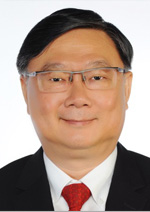 Adjunct Associate Prof Seow Wan Tew is Senior Consultant in the Department of Neurosurgery at the National Neuroscience Institute (NNI) and KK Women’s & Children’s Hospital (KKH). He was Director of Quality in NNI from 2009 till 2015. He was NNI’s Institution Risk Officer from 2010 till 2018 and is currently its Chief Risk Officer.
Adjunct Associate Prof Seow Wan Tew is Senior Consultant in the Department of Neurosurgery at the National Neuroscience Institute (NNI) and KK Women’s & Children’s Hospital (KKH). He was Director of Quality in NNI from 2009 till 2015. He was NNI’s Institution Risk Officer from 2010 till 2018 and is currently its Chief Risk Officer.
Prof Seow has strong interest in medico-legal matters and is actively involved in risk management education. He is a facilitator for MPS’ risk management education programs and a teaching faculty of Singapore Medical Association’s Centre for Medical Ethics & Professionalism. He is a member of the Academy of Medicine’s Medical Experts Committee. He helps review NNI’s potential medico-legal cases and is an Associate Mediator with the Singapore Mediation Centre.
Presentation Synopsis
Medico-legal Risk Management – Where are We Heading?
Patients can become dissatisfied with the healthcare we provide and they do express their unhappiness in many different ways – complaints to the MOH, MPs, newspapers, social media, SMC or through litigation. Medico-legal suits against hospitals and doctors for negligence are not common in Singapore but the recent negligence cases - Noor Azlin v CGH and the Hii Chii Kok case - have brought this area of risk management to the forefront. Losing a negligence suit is costly, both financially and from loss of reputation. They take years to settle and the medical staff involved can end up psychologically stressed and burnt-out. They also highlighted the importance of having proper documentation of patients’ informed consent; especially now that electronic medical records are the norm.
The literature suggests that most medico-legal suits are the result of unmet patient expectations and poor doctor-patient communications. It also shows that healthcare organisations that manage their medico-legal risks proactively are able to successfully reduce their number of litigation cases.
Management of medico-legal risks requires a two-pronged approach – prevention and containment, and both have to be done simultaneously. However, in Singapore, these approaches tend to be reactive. More should also be done to help patients resolve their complaints early through open disclosure and clinical incident management and working collaboratively with them to achieve the best outcome.